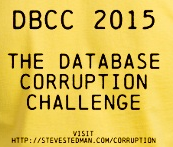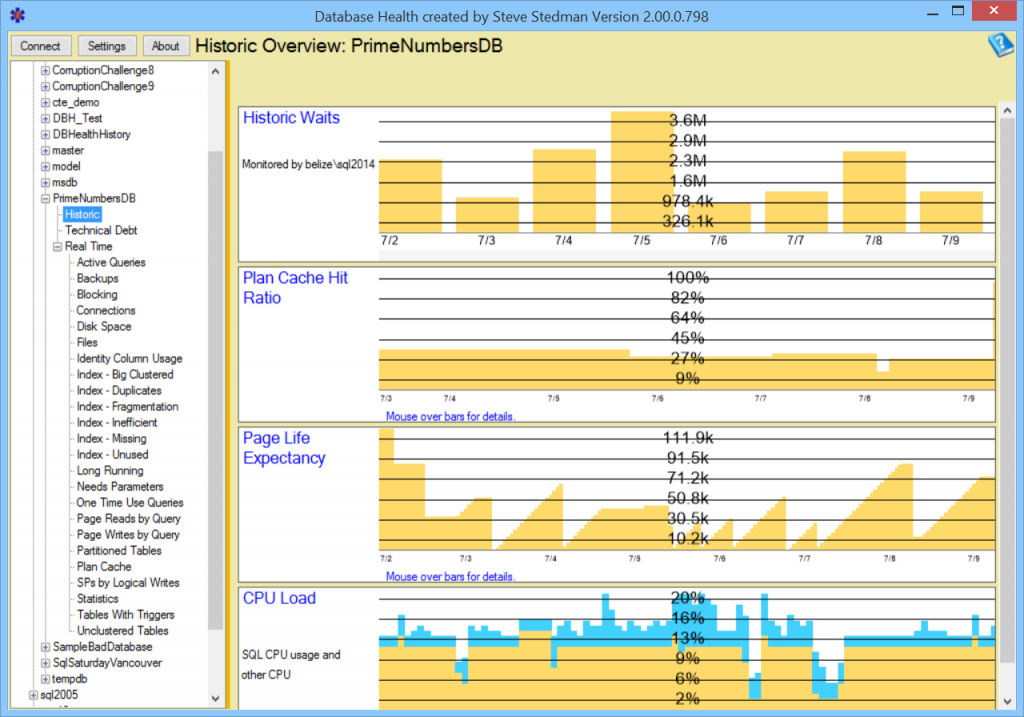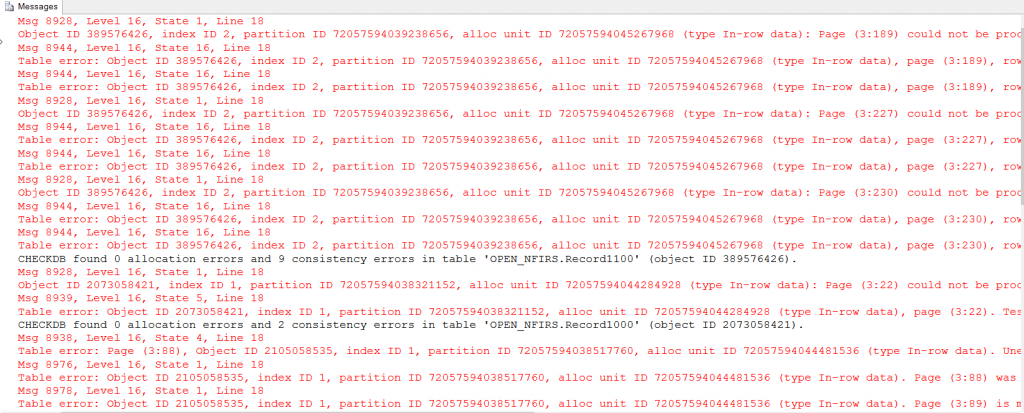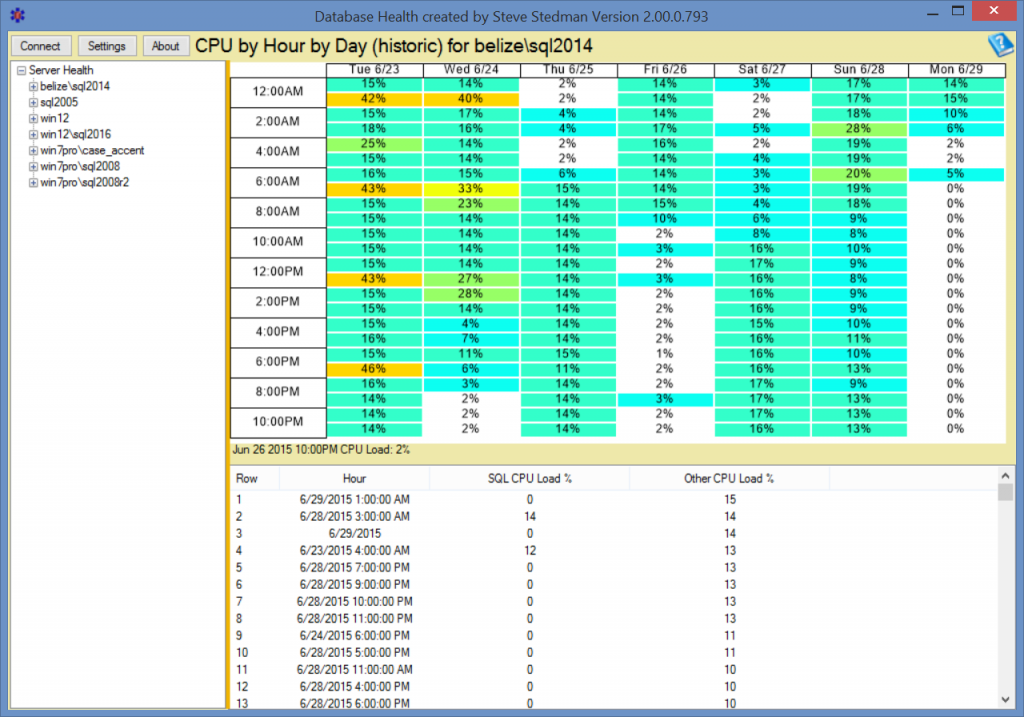Announcing the Database Corruption Challenge Winners
Today I am proud to announce that the Database Corruption Challenge has come to an end. I would like to say that I have met some really great people during this contest and I look forward to seeing you at PASS Summit in October, or other conference someday.
The Corruption Challenge Winners
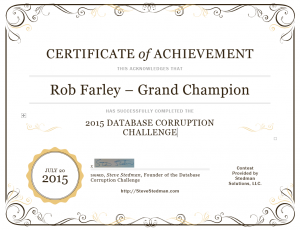 After 10 competitions Rob Farley is the overall Champion of the Challenge with 25 points. Rob won week 2, Week 8 and Week 10. I will get the winning solution posted to my blog in the next day or two for those who are wondering how this weeks challenge was won.
After 10 competitions Rob Farley is the overall Champion of the Challenge with 25 points. Rob won week 2, Week 8 and Week 10. I will get the winning solution posted to my blog in the next day or two for those who are wondering how this weeks challenge was won.
Here is the list of the top scoring participants, the top 10 will receive a limited edition prize t-shirt as their badge of honor for being the top scoring participants:
Read More »Announcing the Database Corruption Challenge Winners
